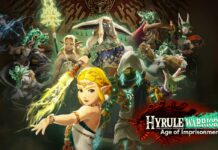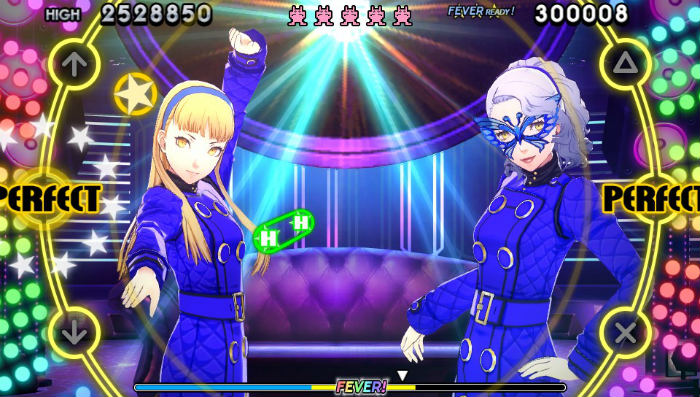
 From the battle arena to the dance floor
From the battle arena to the dance floor
When Atlus’ Shin Megami Tensei: Persona 4 released in 2008, I don’t think anyone could have guessed that this role-playing game would eventually spin-off into a successful fighting series (Persona 4 Arena), and now this fall, a music rhythm game focused on improvised dancing (Persona 4: Dancing All Night). Whereas most franchises tend to stick with their established genre and blueprints, Atlus has long defied these rules with Persona 4, taking the franchise into all-new genres with incredible success. It’s a testament to how awesome the franchise is, and how loyal its fan following is.
Game Details
Platform: PlayStation Vita
Developer: Atlus
Publisher: Atlus
Release Date: September 29, 2015
Genre: Music Rhythm, Interactive Novel
Modes: Single-player
ESRB Rating: T (Teen)
 A full-length visual novel set in the Persona 4 world
A full-length visual novel set in the Persona 4 world
Without a doubt, Persona 4: Dancing All Night is the most ambitious rhythm music game I have ever played. What sets the game apart from its peers is the included 10-hour Story Mode that alternates between visual novel scenes and fast-paced dance numbers. For a genre that typically offers a “play through every song on the disc” type campaign mode, getting a complete story set in the fascinating world of Persona 4 is a real treat indeed. Atlus went all-out with this campaign too, bringing back the entire fan-favourite Investigation Team, all the original voice actors (with the exception of Rise, who’s now voiced by Ashly Burch), and the whole story is lovingly hand-drawn in gorgeous anime style.
The story begins with singer/dancer pop idol Rise Kujikawa (seen left) preparing for her big music career comeback at the upcoming Love Meets Bonds music festival. Her backup dancers for the performance are none other than fellow Investigation Team members, including group leader Yu Narukami. Also participating at the event is Kanamin Kitchen, an up-and-coming idol lead by Rise’s underclassman, Kanami Mashita.
Everything seems to be going along smoothly for Rise and the group until a rumour start spreading around town claiming that anyone who views the Love Meets Bonds website at exactly 12:00 a.m. will be taken to “the other side,” never to wake up again. Soon thereafter, the members of Kanamin Kitchen suddenly disappear (except for Kanami herself), prompting the Investigation Team to spring into action and solve this troubling mystery.

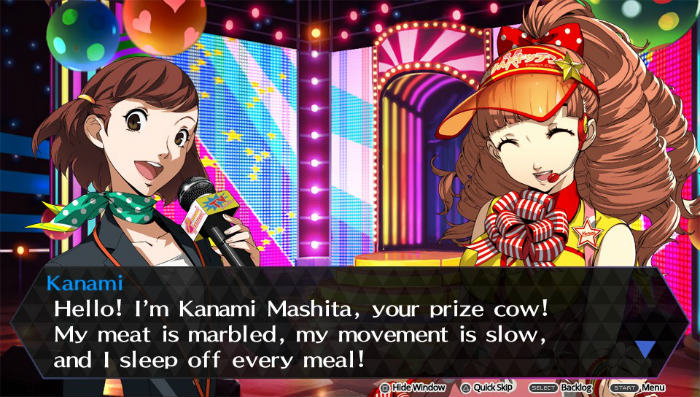
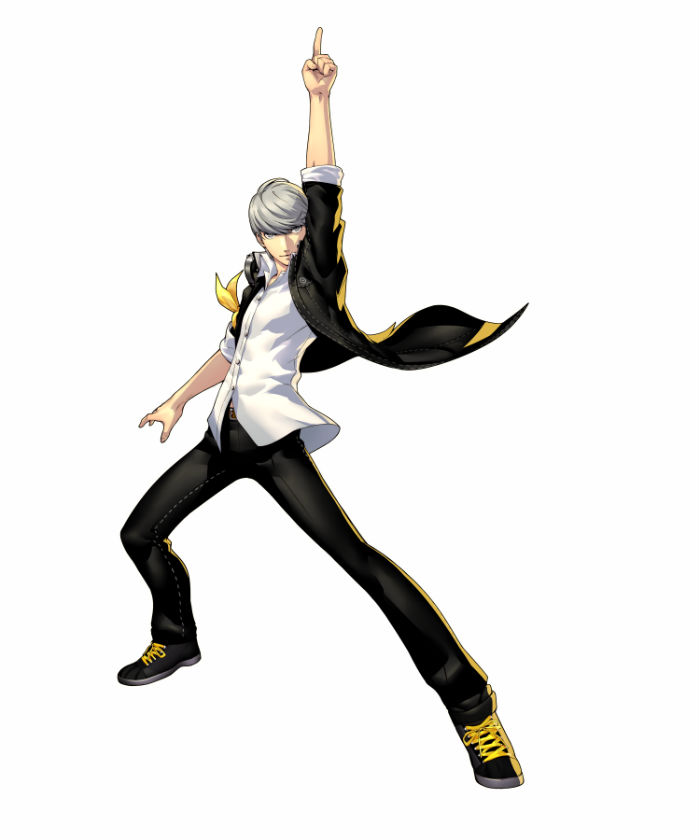 Revisit a shadowy world…for another mystery
Revisit a shadowy world…for another mystery
Much like in the original Persona 4, the story soon takes the team into a strange, shadowy world (this time called the Midnight Stage), where the members of Kanamin Kitchen are believed to be held captive. This is no ordinary shadow world however, as the Investigation Team learns from an eerie voice controlling the Midnight Stage that combat is totally ineffective, including attacking with their powerful “persona” alter egos. So what does the team do? Unleash their true inner selves through the power of dance, of course.
While the first hour or so of Dancing All Night‘s story is mostly dialogue-driven, the pace picks up significantly once the Midnight Stage dancing begins. From this point onward, chapters will alternative between fully voice-acted visual novel scenes, and high-energy dance sequences, all from the perspective of the three main characters: Yu, Rise, and Kanami. I can’t stress enough how fun and entertaining this story is overall, from its superb dialogue and voice acting, to its beautiful hand-drawn art, to its top-notch soundtrack featuring a healthy blend of original tunes and remixed Persona 4 favourites. As I found out, the dancing too is also quite fun.


 Dance the night away
Dance the night away
How the dancing works in the game is really quite simple: notes fly out from the screen’s centre point in six directions, with three corresponding to D-Pad positions (Up, Left, Down), and three requiring button taps (Triangle, Circle, X). There are a few special notes to watch out for as well, such as Unison notes that demand two button presses at the same time, and Hold notes that must be pressed and held for a brief period. Each successful note break will add to your “Hype Gauge,” a measurement of how into your dance routine the audience is, while missing notes will decrease it. For extra points, optional blue “scratch” rings can be triggered by flicking either analog stick your PS Vita.
It’s amazing how gorgeous the dancing sequences are with their multiple camera angles and neon palette, all while your character busts a move on the dance floor. For even more visual flair, by hitting rainbow-coloured Fever Rings you can initiate “Fever Time,” a brief section where you’ll be joined by a dancing partner and your Hype Gauge will increase faster with each note break. During Fever Time the already bright and busy visuals will kick up a notch with even more special effects and extra colours. As beautiful as the graphics are, it’s hard to focus on the action on the dance floor when you’re busy breaking notes. That’s why I often found myself watching the replay of my dances, just so I could relax and watch all the stunning dance routines play out.
Incredible soundtrack
Another feather in Dancing All Night‘s cap is its thumping soundtrack that brings together some of the best tunes from Persona 4 and Persona 4 Arena—many of them remixed by famous Japanese musicians—in addition to plenty of all-new tracks. There are unforgettable songs like Pursuing My True Self, the catchy opening theme for Persona 4, Time to Make History, a battle track from Persona 4 Golden, and an awesome vocal version of the classic Junes Theme. The music is so great, don’t be surprised if you venture into the game’s jukebox player to listen to individual tracks, or create your own custom playlist.
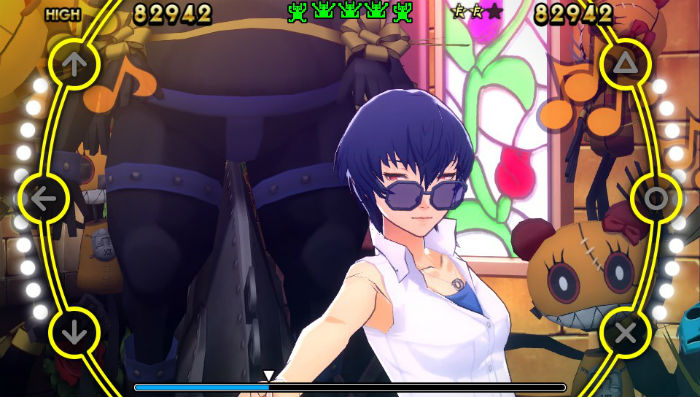
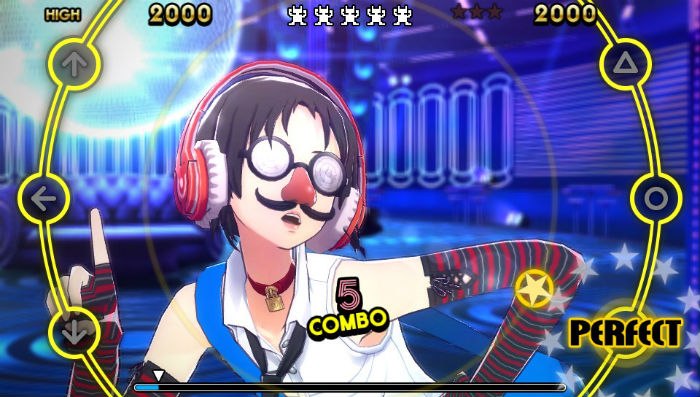
Boogie the way you want in Free Dance Mode
When you want a break from Story Mode, or are looking to test your skills in specific songs, Free Dance Mode is the place to be. Here you can play any song you’ve already completed in Story Mode across four difficulty settings (Easy, Normal, Hard, and the unlockable All Night), and dress your characters up in fun(ny) new costumes. New outfits and accessories for each character can be purchased in the shop, which stocks new winter/summer outfits, Santa suits, headphones, 3D glasses, and more. What’s I think is even cooler though, is the ability to buy game modifiers that you can turn on or off in Free Dance. Some modifiers will make tracks easier to complete, at the expense of lowering your final score and money gained, while other modifiers can make songs more difficult, with the benefit of increasing your final score and money. It’s a superb system that enables you to customize the difficulty exactly to your liking, or to simply have fun by changing up the gameplay.
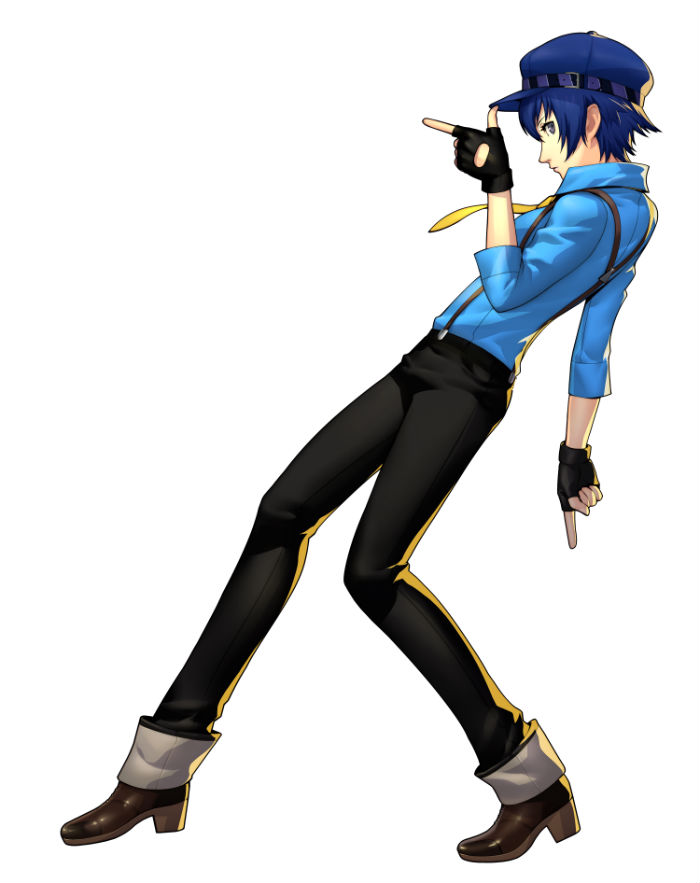 Final thoughts
Final thoughts
Persona 4: Dancing All Night goes way above and beyond traditional music rhythm games with its excellent 10-hour story mode that will keep you entertained from start to finish. The dancing scenes are a bit sparse at first, but soon enough the action picks up all the way until the big finale. An outstanding soundtrack featuring new tunes, and remixed Persona 4 favourites, make the sounds equally as enjoyable as the sights. Add in a Free Dance Mode with extensive customization options, and you have one of the best music rhythm games to come along in years.
+ A compelling story set in the Persona 4 universe
+ Beautiful hand-drawn art
+ Excellent soundtrack with plenty of fan service
+ Easy to pick, yet difficult to master
+ Great customization features in Free Dance Mode
– Punishingly hard on higher difficulties
– Backgrounds are colourful and busy, can be distracting
OVERALL
Gameplay: 3.5/5
Graphics: 4.5/5
Sound: 4.5/5
Lasting Appeal/Replayability: 4/5
Overall Rating 4.1/5 (82%)

